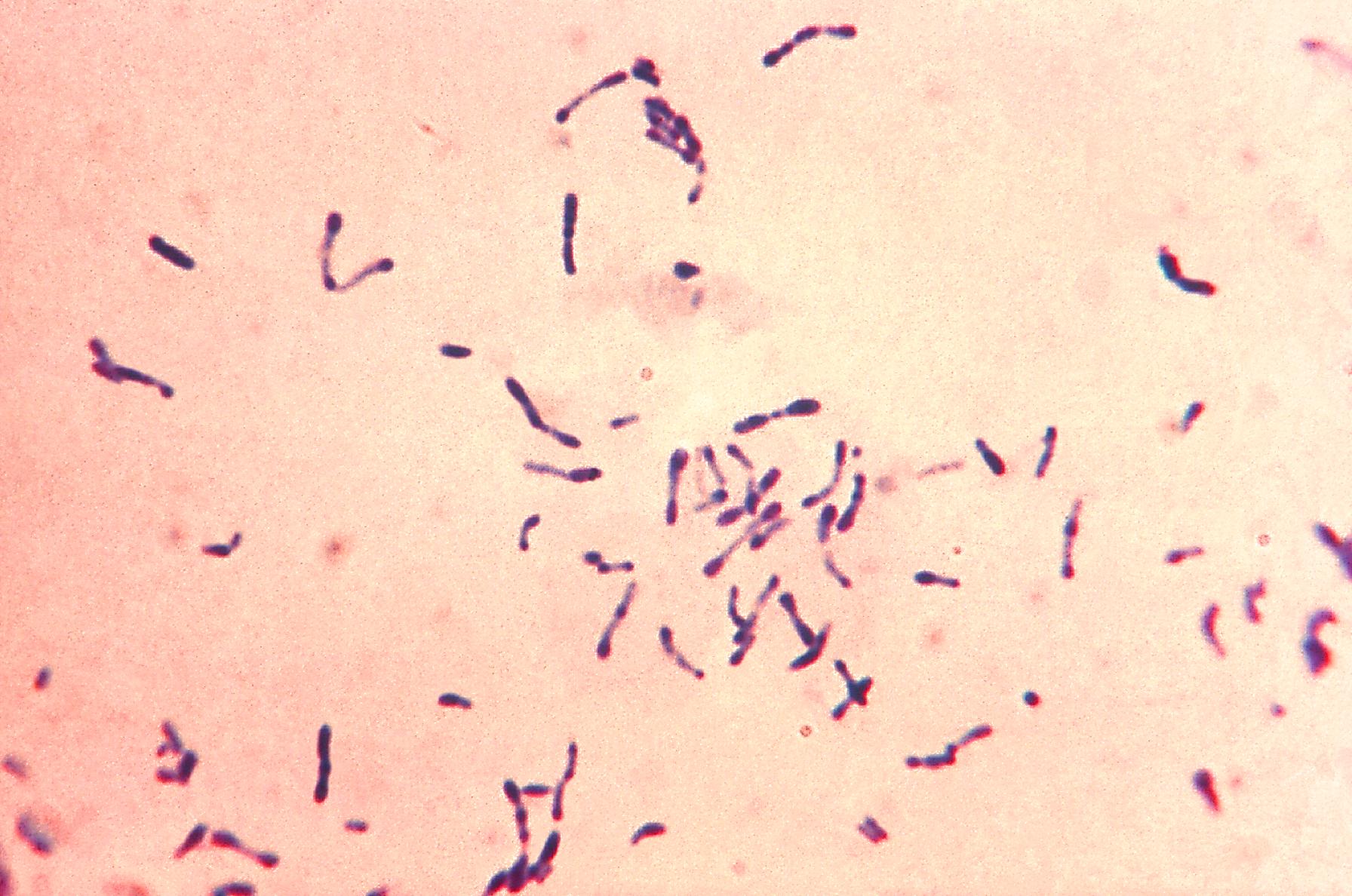Corynebacterium diphtheriae
|
Diphtheria Microchapters |
|
Diagnosis |
|---|
|
Treatment |
|
Case Studies |
|
Corynebacterium diphtheriae On the Web |
|
American Roentgen Ray Society Images of Corynebacterium diphtheriae |
|
Risk calculators and risk factors for Corynebacterium diphtheriae |
Editor-In-Chief: C. Michael Gibson, M.S., M.D. [1];
| Corynebacterium diphtheriae | ||||||||||||
|---|---|---|---|---|---|---|---|---|---|---|---|---|
 Gram stained Corynebacterium diphtheriae culture
| ||||||||||||
| Scientific classification | ||||||||||||
| ||||||||||||
| Binomial name | ||||||||||||
| Corynebacterium diphtheriae Kruse, 1886 |
Corynebacterium diphtheriae is a pathogenic bacterium that causes diphtheria. It is also known as the Klebs-Löffler bacillus, because it was discovered in 1884 by Germany|German bacteriologists Edwin Klebs (1834 – 1912) and Friedrich Löffler (1852 – 1915).
Morphology and toxin production
C. diphtheriae is a facultatively anaerobic, Gram positive organism, characterized by non-encapsulated, non-sporulated, immobile, straight or curved rods with a length of 1 to 8 µm and width of 0.3 to 0.8 µm, which form ramified aggregations in culture (looking like "Chinese characters"). The bacterium may contain polymetaphosphate aggregates called Volutin granules. It is pathogenic only in humans.
Many strains of C. diphtheriae produce diphtheria toxin, a proteic exotoxin, with a molecular weight of 62 kilodaltons which ADP-ribosylates host EF-2, which results in the inhibition of protein synthesis and thus is responsible for the signs of diphtheria. The inactivation of this toxin with an antitoxic serum (antitoxin) is the basis of the antidiphtheric vaccination. However, not all strains are toxigenic; the ability to produce the exotoxin is conferred on the bacterium when it is infected by a bacteriophage (a mechanism termed "lysogenic activation"). A non-toxigenic strain can thus become toxigenic by the infection of such a bacteriophage.[1]
Classification
Three subspecies are recognized: C. diphtheriae mitis, C. diphtheriae intermedius, and C. diphtheriae gravis. The three subspecies differ slightly in their ability to metabolize certain nutrients, but all may be toxigenic (and therefore cause diphtheria) or non-toxigenic.
Diagnosis
In order to accurately identify C. diphtheriae, a Gram stain is performed to show gram-positive, highly pleomorphic organisms with no particular arrangement (resembling chinese letters). Then, culture the organism on an erichment medium, namely Löffler's serum, to allow it to overgrow any other organisms present in the specimen. After that, use a selective plate known as tellurite agar which allows all Corynebacteria (including C. diphtheriae) to reduce tellurite to metallic tellurium producing brown colonies and, only in the case of C. diphtheriae, a black halo around the colonies allowing for easy differentation of the organism.
It's worth noting that a low concentration of iron is required in the medium for toxin production; as at high iron concentrations, iron molecules bind to a repressor which shuts down toxin production[2]. This is most appreciated when performing Elek's test for toxogenecity, in order to know if the organism is able to produce the diphtheria toxin or not.
Sensitivity
The bacterium is sensitive to the majority of antibiotics, such as the penicillins, ampicillin, cephalosporins, quinolones, chloramphenicol, tetracyclines, cefuroxime and trimethoprim.
References
- ↑ Nester, Eugene W.; et al. (2004). Microbiology: A Human Perspective (Fourth ed.). Boston: McGraw-Hill. ISBN 0-07-247382-7.
- ↑ Microbiology: A Human Perspective. Fourth edition. McGraw Hill
External links
- CoryneRegNet - Database of Corynebacterial Transcription Factors and Regulatory Networks
de:Corynebacterium diphtheriae id:Corynebacterium diphtheriae it:Corynebacterium diphtheriae nl:Corynebacterium diphtheriae fi:Corynebacterium diphtheriae